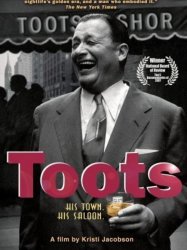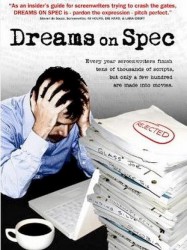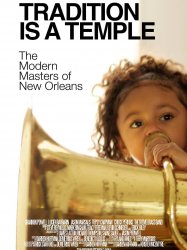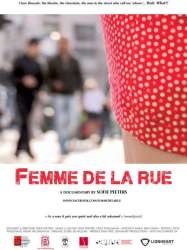Les films ayant le thème "Documentaire sur les villes", triés par recette

The Comedy Garage (2011)
, 50minutesRéalisé par Logan Leistikow
Origine Etats-Unis
Genres Comédie, Documentaire
Thèmes Documentaire sur une personnalité, Documentaire sur les villes

L'Est pour toujours (2011)
, 1h20Origine Canada
Genres Documentaire
Thèmes L'enfance, Documentaire sur une personnalité, Documentaire sur les villes
Vues de l'Est, réalisé en 2003, donnait la parole à des enfants du quartier Hochelaga-Maisonneuve, des enfants étiquetés comme perdants avant même d'avoir poussé leur premier cri et qui doivent se battre plus que d'autres pour se faire une place au soleil. Sept ans plus tard, L'Est pour toujours prend la mesure du temps qui a passé et des traces qu'il a laissées. Il s'attache à la vie de ces enfants devenus grands, à leurs réflexions, à leurs rêves. L'Est est-il un frein ou bien s'il peut devenir une une force ?

The Four Year Plan (2011)
Origine Royaume-uni
Genres Documentaire
Thèmes Sport, Documentaire sur le sport, Football, Documentaire sur les villes
 , 1h22
, 1h22Origine Etats-Unis
Genres Documentaire
Thèmes Documentaire sur les villes
Acteurs Peter Coyote, Robin Williams, Luis Valdez, Bill Irwin, William Ball

Sweet Toronto/Keep On Rockin (1969)
, 1h10Réalisé par D. A. Pennebaker
Origine Etats-Unis
Genres Documentaire, Musical
Thèmes La musique, Documentaire sur la musique, Documentaire sur une personnalité, Documentaire sur les villes, Musique
Acteurs John Lennon, Yoko Ono, Mal Evans, Ray Manzarek

Sabbath in Paradise (2000)
, 1h25Genres Documentaire, Musical
Thèmes La musique, Religion, Documentaire sur la musique, Documentaire sur une personnalité, Documentaire sur la religion, Documentaire sur les villes, Le jazz, Musique, Religion juive
Acteurs John Zorn

World's Best Prom (2006)
, 1h20Genres Documentaire
Thèmes Danse, Le thème de l'éducation, La musique, Documentaire sur la musique, Documentaire sur une personnalité, Documentaire sur les villes, Musique
The film focuses on the prom-obsessed residents of Racine and, in particular, two very different girls and one boy (Tonya, Dori, and Ben) who are followed in the days and nights leading up to their prom night. The "mega prom" was introduced to Racine almost 50 years ago by the city's Rotary Club after an alcohol-related car accident. As a result, the Rotary decided to sponsor a post-prom party for the city's high schools as a safe alternative for prom-goers.

Toots (2007)
, 1h25Origine Etats-Unis
Genres Documentaire
Thèmes Documentaire sur les villes
The film identifies what were the markers of Toots' career as a celebrity restaurateur: Prohibition, the growth of the Mafia, the golden age of baseball, and the death of the saloon scene at in the "serious" atmosphere created by the tumult of the 60s. Throughout the film, there is a feel of romantic nostalgia as all those who are interviewed recall Toots fondly as a lover of New York, at a moment when the city was awash in wealth and celebrity as never before, and that the city's sizzle was once embodied by a sports bar in Midtown: a place of glamour and egalitarianism, where Joe DiMaggio and Frank Sinatra and Ernest Hemingway rubbed elbows with working stiffs.

Dreams on Spec (2007)
, 1h26Origine Etats-Unis
Genres Documentaire
Thèmes Film sur un écrivain, Documentaire sur le monde des affaires, Documentaire sur le cinéma, Documentaire sur les villes
Acteurs James L. Brooks, Nora Ephron, Carrie Fisher, Gary Ross, Steven E. de Souza, Scott Alexander
The film follows three aspiring screenwriters as they struggle to turn their scripts into movies. David is a hip talent agent's assistant with three scripts circulating around town. He's plugged into "young Hollywood" - and when he's not working or writing, he's usually hanging out at the beach. Joe is a middle-aged family man who has split time over the last three years between caring for his autistic daughter and writing what he believes could be the great American screenplay. And Deborah is trying to become one of the few African-American women to ever write and direct a feature film, though she's struggling just to pay her bills while she searches for money to produce her script. Between these stories, the film intercuts critical insight from such Hollywood screenwriters as James L. Brooks, Nora Ephron, Carrie Fisher, Gary Ross, Steven E. de Souza, Ed Solomon, Paul Guay, Scott Alexander and Larry Karaszewski.
 , 1h36
, 1h36Origine Etats-Unis
Genres Documentaire, Musical
Thèmes La musique, Documentaire sur la musique, Documentaire sur une personnalité, Documentaire sur les villes, Le jazz, Musique
Contemporary New Orleans jazz musicians discuss their childhood introductions to music in Baptist churches and through local traditions like second line (parades) and Jazz Funerals, and the role of Danny Barker in keeping traditional New Orleans Jazz alive through the 70’s and 80’s. Asking the artists point blank, director Darren Hoffman explores the potential “death” of traditional jazz through modernization and marginalization and its preservation through mentorship and the continuation of traditions that intrigue and inspire young people to play the music of previous generations.

Moon Over Broadway (1997)
Réalisé par Chris Hegedus, D. A. Pennebaker
Origine Etats-Unis
Genres Documentaire, Musical
Thèmes Documentaire sur les villes
Acteurs Philip Bosco, Carol Burnett, Randy Graff, Jane Connell, Tom Moore
 , 1h13
, 1h13Origine Etats-Unis
Genres Musical
Thèmes La musique, Documentaire sur la musique, Documentaire sur une personnalité, Documentaire sur les villes, Le hip-hop, Musique, Gangsters

À propos de Nice, la suite (1995)
, 1h40Réalisé par Abbas Kiarostami, Raoul Ruiz, Costa-Gavras, Claire Denis, Pavel Lounguine, Catherine Breillat, Raymond Depardon, Parviz Kimiavi
Origine France
Genres Documentaire
Thèmes La provence, Documentaire sur les villes
Acteurs Grégoire Colin, Laura del Sol, Arielle Dombasle, Parviz Kimiavi
65 ans après le documentaire d'inspiration surréaliste de Jean Vigo, À propos de Nice, de 1930, un hommage au cinéaste de L'Atalante et Zéro de conduite.

Femme de la rue (2012)
, 17minutesOrigine Belgique
Genres Documentaire
Thèmes Documentaire sur les villes
 Connexion
Connexion
